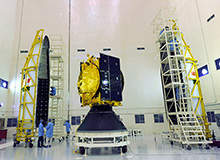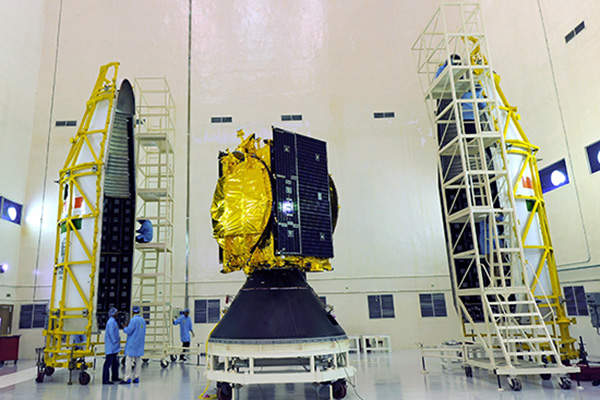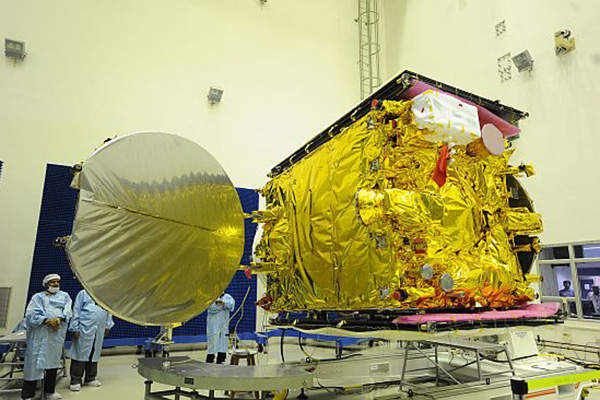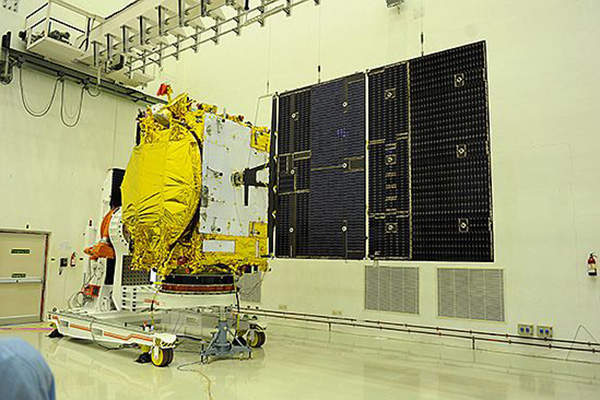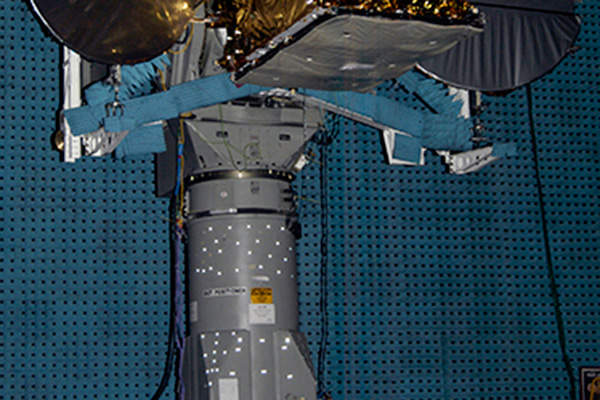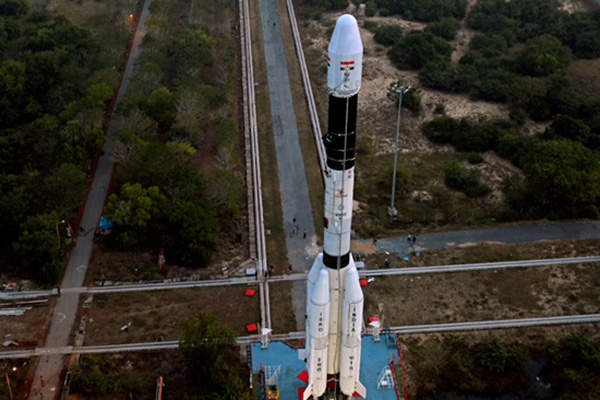
GSAT 14 is a communication satellite designed and manufactured by Indian Space Research Organisation (ISRO). The satellite was launched into the geostationary transfer orbit (GTO) from Satish Dhawan Space Centre in Sriharikota in January 2014. It is placed at 74° east longitude similar to satellites, such as INSAT-3C, INSAT-4CR and KALPANA-1. The GSAT 14 will replace GSAT 3 which was launched in 2004.
GSAT 14 is the 23rd geostationary communication satellite launched by ISRO and will have a mission life of at least 12 years.
Launch details of the ISRO communication satellite
The satellite was integrated with GSLV-D5 launch vehicle in December 2013. The mission readiness review (MRR) team of ISRO reviewed the launch operations and cleared the satellite for launch in December 2013. The 29-hour countdown for the satellite launch was commenced on 4 January 2014 and launch took place successfully at the scheduled time.
The launch was originally scheduled to take place in August 2012, but was postponed due to fuel leakage in the UH25 fuel system of the second-stage engine.
GSAT 14 design and development
The GSAT 14 was designed, assembled and built by ISRO. The satellite has a cuboid shape and a lift-off mass of 1,982kg, while the dry mass weight is 851kg. It includes one 2m and one 2.2m single shell-shaped reflector antennae.
Two solar arrays, with two panels each, which can generate about 2.6kW of power are coupled to the satellite. In addition, light-weight Lithium-Ion batteries are fitted to provide power to the satellite during eclipse period.
The GSAT 14 is based on class I-2K satellite bus developed by Antrix Corporation, a commercial and marketing arm of ISRO.
Communication capabilities and technology used
The satellite is equipped with six extended C-band transponders, six Ku-band transponders, and two Ka-band beacons. It will cover the Indian mainland by providing enhanced telecommunication services as well as tele-education and telemedicine. The transponders will further augment the capacity in the INSAT/ GSAT system.
The satellite is equipped new technologies such as fibre optic gyro, round type bolometer, and active pixel sun sensor. It also includes field programmable gate array based earth sensors and thermal control coating experiment technologies.
Launch vehicle
The GSAT 14 was launched onboard GSLV-D5 launch vehicle manufactured by ISRO. The GSLV-D5 is fitted with one main engine and two smaller steering engines, which develop a total nominal thrust of 73.55kN. The vehicle fires for a nominal duration of 720 seconds in the upper stage.
The satellite launch was completed in three stages, which included a combination of solid, earth-storable liquid and cryogenic propellants in the first, second and third stages respectively.
The first stage was fitted with four earth-storable liquid strap-on boosters. A propellant mass of 39.5t was used in the second stage. The first and second stages were similar to those of the previous GSLV missions, but the third stage used indigenously developed cryogenic upper stage project (CUSP).
The third stage development involved complex ground support systems needed for stage test facilities transportation, liquid oxygen and liquid hydrogen tanks, as well as handling of cryo fluids and other safety aspects.
Ground control station
The orbit raising manoeuvres of the GSAT 14 satellite and the GSLV-D5 vehicle are controlled from the master control facility (MCF) located at Hassan. The satellite performance monitoring, tracking, and range safety is also be monitored from the same location.

